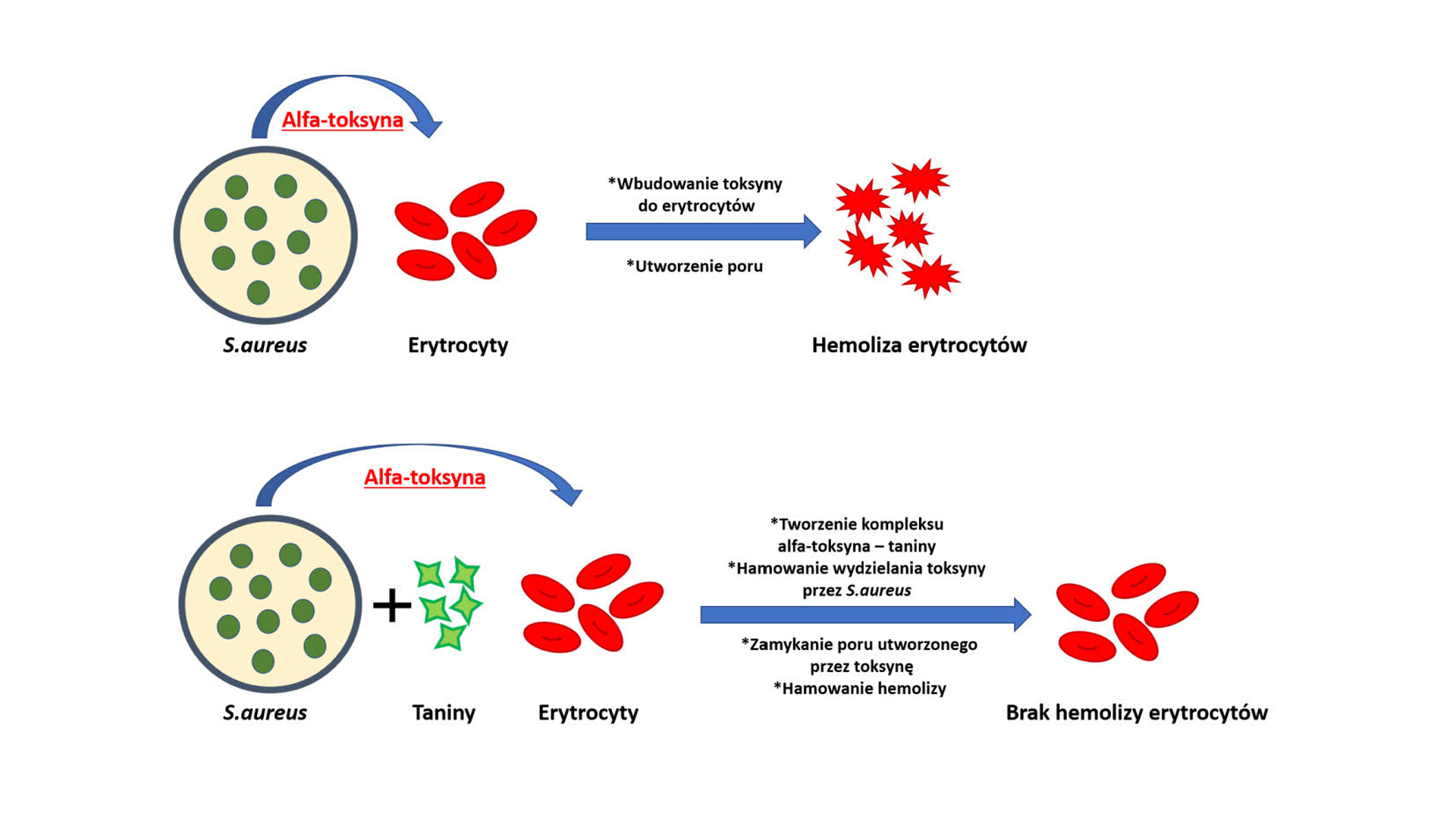
The scientific team consists of: dr Ewa Olchowik-Grabarek, prof. Szymon Sękowski, prof. Maria Zamarajewa from the Department of Microbiology and Biotechnology, Faculty of Biology, University of Białystok (the Head of the Department is prof. Izabela Święcicka) in cooperation with the Laboratory of Physiology and Pharmacology of the Libre University in Brussels and the Institute of Bioorganic Chemistry of the Academy of Sciences in Uzbekistan, demonstrated new possibilities for the biomedical use of compounds of natural origin from the tannin group. These may increase the effectiveness of traditional antibiotic therapy in the prevention of Staphylococcus aureus infections.
The monthly magazine Akademic Forum reported on the results of this research.
As scientists from the University of Białystok emphasize in an article published by the Forum, up to 30% of people may be carriers of Staphylococcus aureus. This Gram-positive bacterium is the etiological factor of many diseases, including: skin and soft tissue infections or food poisoning. Staphylococcal infection may also result in the development of necrotic states as well as toxic shock. For this reason, as well as due to the dynamic development of antibiotic resistance and the production of many toxins that are virulence factors, Staphylococcus aureus poses a great challenge to modern medicine and clinical microbiology.
A particular problem are strains resistant to antibiotics especially those resistant to methicillin and vancomycin. This causes big problems in the treatment of people infected with this bacterium. The second extremely important factor determining the high pathogenic potential of staphylococci are the toxins secreted by these bacteria.
- „Due to the antibiotic resistance of Staphylococcus aureus and the toxins they secrete, there is an urgent need to search for new antibiotics and other compounds that act on Staphylococcus aureus. In particular, the approach of inhibiting the activity of toxins secreted by these bacteria can significantly improve the effectiveness of antistaphylococcal therapies," emphasizes Szymon Sękowski, professor at the University of Białystok.
Polyphenols of plant origin have strong antibacterial properties. These compounds have long been widely used in traditional medicine and subsequent studies report their new possible applications also in the fight against bacteria.
Tannins are one of the groups of polyphenols. Due to the large number of hydroxyl residues, as well as variable elasticity of the molecules and different hydrophobicity they have a high affinity for both cell membranes and proteins. Research into the antibacterial activity of tannins also confirms their strong antibacterial potential. These compounds - as scientists from the University of Białystok remind us - are widely available in everyday food products, including: tea, red wine or pomegranates, blueberries, chokeberries.
- "The strong interaction of tannins with proteins allowed us to assume that they would interact with alpha-hemolysin (one of the main toxins secreted by Staphylococcus aureus), leading to the inhibition of its activity related to the formation of pores and destruction of cells of the attacked organism," says dr Ewa Olchowik-Grabarek.
Therefore, it was investigated how tannins react with the toxin secreted by Staphylococcus aureus.
As professor points out Maria Zamarajewa: - "One of the observed benefits was the inhibition of the breakdown of red blood cells observed by the staphylococcal toxin by the tested compounds. Subsequent research allowed us to conclude that the mechanism responsible for stopping the breakdown of red blood cells is related to the strong reaction of the tested tannins with alpha-toxin”.
The results of the conducted research create new possibilities for the biomedical use of compounds of natural origin from the tannin group in order to increase the effectiveness of traditional antibiotic therapy in the prevention of Staphylococcus aureus infections. By strongly interacting with bacterial cell membranes, tannins can also increase the sensitivity of bacteria to antibiotics including methicillin and vancomycin.
- "These data constitute an important contribution to understanding the nature of bacteria-polyphenol interactions but are also a very good starting point for further analyzes of the effects of plant products on microorganisms" says prof. Izabela Święcicka.
The results of the experimental work were published in the journal Bioelectrochemistry (Olchowik-Grabarek E., Sekowski S., Mies F., Bitiucki M., Swiecicka I., Abdulladjanova N., Shlyonsky V., Zamaraeva M., "Electrophysiological and spectroscopic investigation of hydrolysable tannins interaction with α-hemolysin of S. aureus" Bioelectrochemistry (2023) 150, 108318, doi.org/10.1016/j.bioelechem) (IF=4.8, MNiSW=100).

Source: Academic Forum